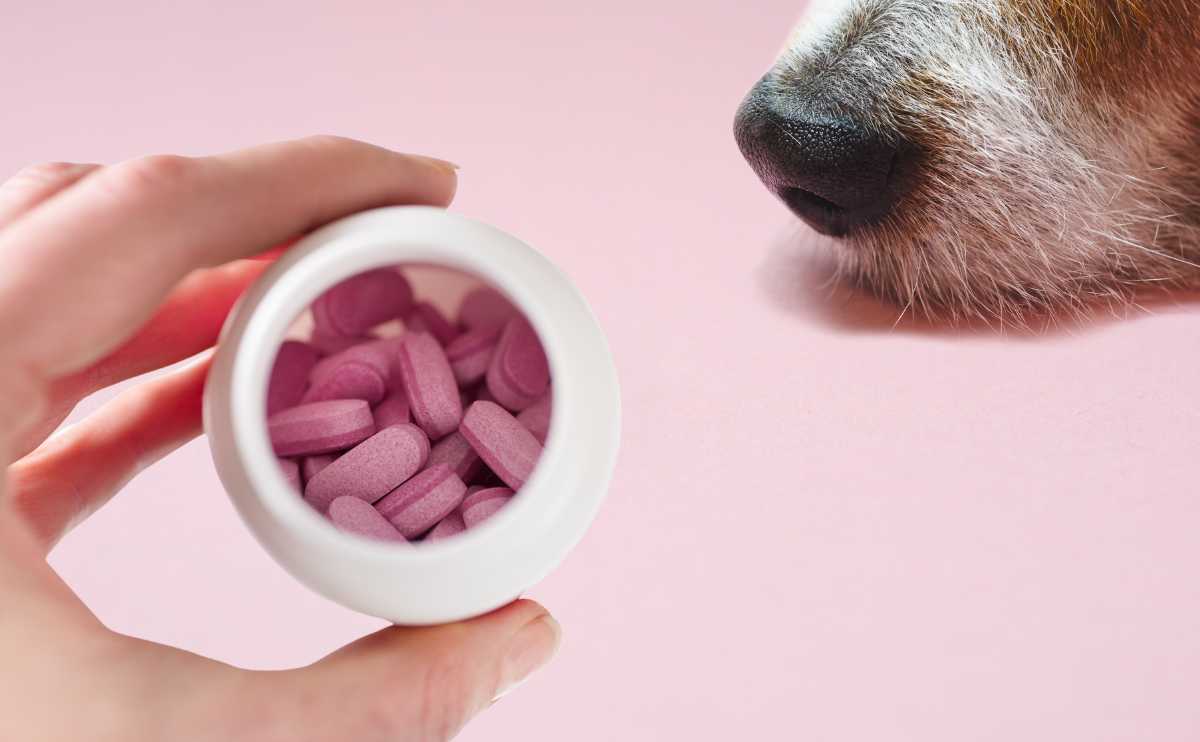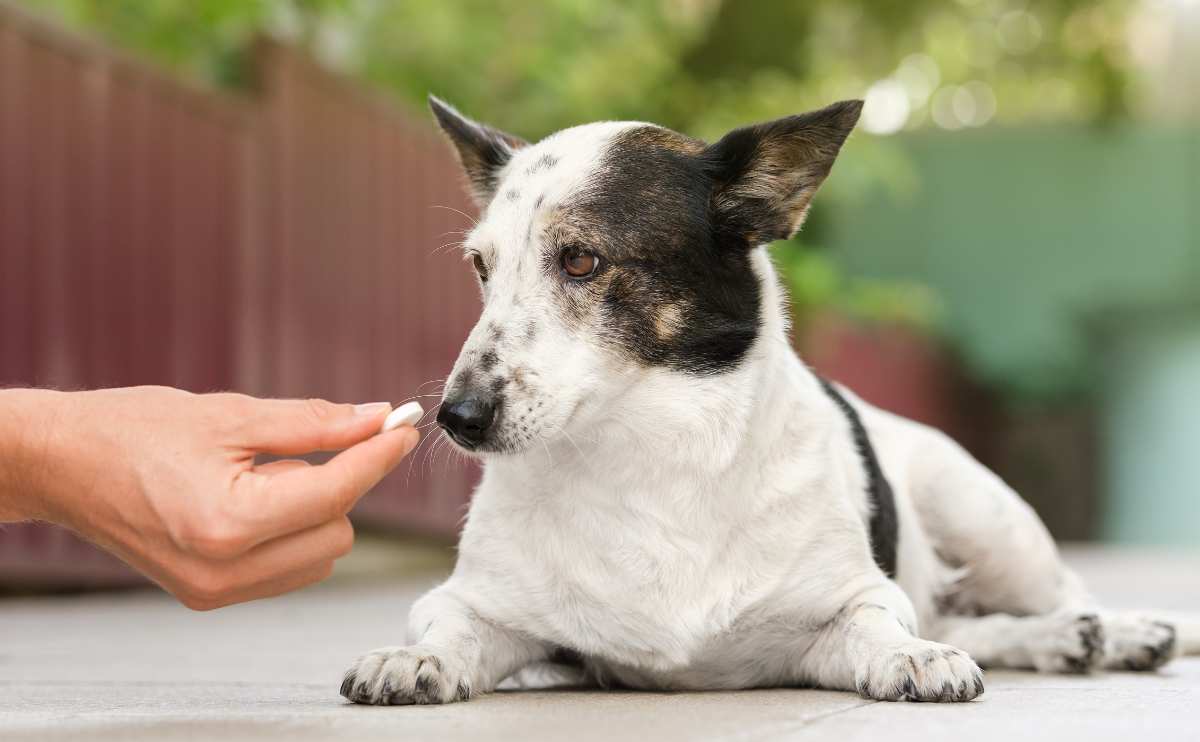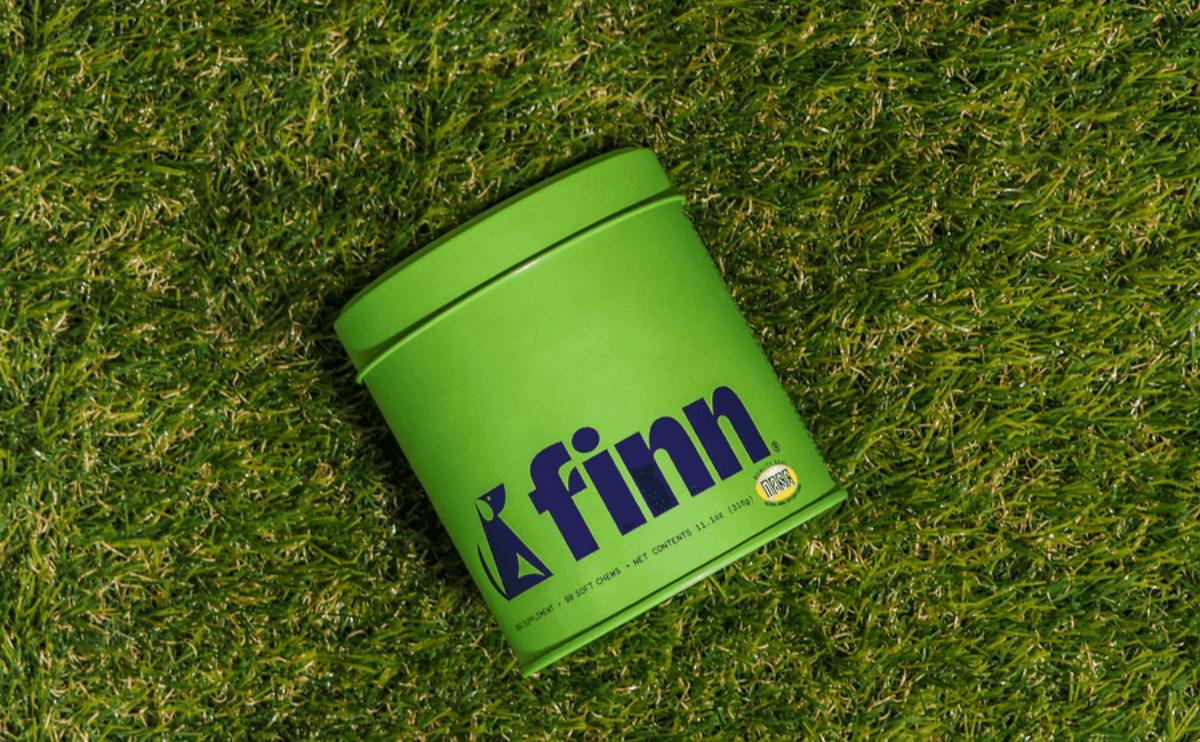When you purchase through links on our site, we may earn a commission. Here’s how it works.
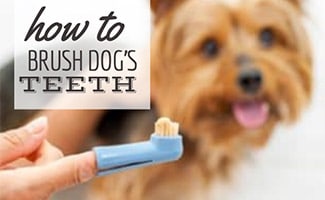
After a long day, what dog owner doesn’t love the joyful welcome they receive from their beloved pets when they walk in the door? But when you bend down to greet your happy hound, does their bad doggy breath make you cringe? That stinky smell could be more than just a sign that Fido ate something he shouldn’t have. Often bad breath, just as for humans, is a sign that your dog’s dental health is not what it should be. So what does a responsible dog owner do?
Do You Really Need To Brush Your Dog’s Teeth?
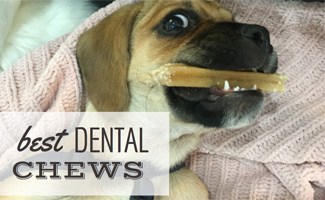
Many doggy owners often ask, “do I really need to “brush” my dog’s teeth?” Can’t I just give them a dental chew or rawhide to clean their teeth? While the occasional dog chew is a good idea if given responsibly to your pup, regular brushing is still required. Veterinarians strongly recommend it daily to prevent dental disease.
Luckily for dogs, they aren’t as prone to cavities as humans. However, according to VCA Animal Hospitals, more than two-thirds of dogs over three have some form of active gum disease, making it the most common disease in pet dogs.1
What Is Periodontal Disease?
Just like us, our pets can develop periodontal disease when plaque from bacteria builds up on and around their teeth (cue toothpaste commercial music). If you don’t remove this plaque, it gets hard and turns into tartar. Tartar, a calcified matrix of plaque and bacteria, irritates and inflames your doggie’s gums and can cause anything from mild gingivitis to advanced periodontal disease.
Without intervention, all of this can lead to severe pain for your dog, tooth loss, abscesses in their mouth, and/or bacterial infections that can spread throughout the bloodstream to the kidneys, liver, heart, or brain. Unfortunately, periodontal disease is irreversible, but prevention is possible with regular dog teeth cleaning.
How Do I Brush My Dog’s Teeth?
The best advice is to take it slow and always reward your canine after so that they know good things come from having their teeth brushed. If you are a “puppy” owner, then you have the advantage of getting your dog used to this new routine early. If you have an older pup, you can still work this into your overall care regimen for your pet.
1. Get Your Dog Used To Your Finger In Its Mouth
Before using a brush or paste, you need to teach your dog that it can be fun to have your fingers in his mouth. Dip your finger in something like peanut butter (or anything else they like) and let your dog lick your finger. As they do this, gently rub your finger along the sides of the teeth and gums. Gently lift their lips as you would when brushing.
Repeat a couple of times a day for 2-3 days. Towards the end of the process, introduce the doggie toothpaste you have chosen (do NOT use human toothpaste) to get them used to the smell and taste.
2. Open Your Dog’s Mouth
When your dog is comfortable with your fingers in his mouth, you can move on to teaching him to accept you opening his mouth. Make sure you have lots of treats on hand as positive reinforcement.
Gradually work up to opening his mouth for just a few seconds, increasing the time slowly. Always reward with treats and do this 8-10 times a session over several days.
3. What To Do If He’s Fighting You
If your dog struggles during these exercises, gently but firmly continue to hold his muzzle until he stops. As soon as he stops struggling and holds still for one second, release his muzzle.
You may have progressed a little too fast, so go back and practice the previous steps for a few more days. Try moving to the next step again when he seems comfortable at that step for two or three days.
4. Brush Teeth
Once you have gotten him used to you exploring his mouth and moving your fingers along teeth and gums, you can move on to brushing. Make sure that you start slowly once again and increase the time over days. Dogs have 42 teeth, so make sure to get them all.
5. Reward
Again, always follow with favorite treats so that your pup is happy to let you brush his teeth.
Which Products Should I Use?

There are many options for brushes and toothpaste out there for pups. Always pick something that is designed for a dog.
From toothbrushes that look like they are for humans to finger brushes, find one that fits comfortably in your dog’s mouth and is soft enough not to irritate their gums.
Doggie toothpaste comes in many flavors, including liver, mint, chicken, and peanut butter. But, remember, NEVER use human toothpaste for a dog.
Although your pooch may love the taste of mint, most human toothpaste has higher levels of fluoride in them. Your dog can develop fluoride toxicity much quicker than a human. Also, most human toothpaste has salts, detergents, and baking soda, all of which can harm your dog’s teeth.
If you are not sure where to start, we recommend the Nylabone Advanced Oral Care Kit (View on Amazon)
Read Our Dog Toothpaste Reviews
How Often?
Dogs eat every day, and just like humans, it would be ideal to brush your pup’s teeth after every meal. In the real world, many of us would never have the time for this. Once a day is the best recommendation for brushing their teeth, but if your schedule is still tight, aim to brush several times a week. Try to brush for at least 30 seconds per side of their mouth during each session.
One important thing to note is that smaller dogs and pups with flat or short broad snouts (i.e., pugs, bulldogs, etc.) often require more frequent brushing. Because of their smaller mouths, these dogs’ teeth are more crowded together. They are more prone to plaque build-up and thus more likely to develop periodontal disease. Learn more about how often to brush from Pets Best Insurance:
Tips For Brushing Dogs Teeth
- Start sooner than later with brushing your dog’s teeth. The sooner you start, the healthier their teeth will be throughout their whole life.
- Regular annual vet exams that include a dental check-up are a good idea.
- Hard dog food is better than soft on a daily basis and the occasional chew treats (given under owner supervision). But don’t give your pup natural bones because they’re hard enough to fracture teeth.
- Do not try to overpower your furry friend or punish him if he resists tooth brushing. Forcing him to submit will only make him more reluctant to let you brush his teeth—and it might even cause defensive aggression. Instead, slowly and gently accustom your dog to tooth brushing.
- If you need help learning how to brush your dog’s teeth, you can always consult a Certified Professional Dog Trainer to help you.
- If you feel your dog needs a more intensive cleaning, take them to a professional veterinarian with the right training and properly administer anesthesia. Your pooch will thank you in the long run.
Can I Floss My Dog’s Teeth?
Flossing your dog’s teeth is not recommended. Attempting to floss your dog’s teeth is difficult and likely involves wrangling them. This battle is likely to lead to injury or ingestion of the floss. If your dog swallows the dental string, it could get tangled up in the intestines, creating a potentially fatal situation.
We recommend this flossing rope but only as a toy. Rope toys also present a risk of intestinal blockage if swallowed, so if you decide to give one to your dog, be sure to watch them closely.
Pet Insurance Can Cover Dental Issues
Unfortunately, even if you’re diligent with brushing your dog’s teeth, they could still be diagnosed with periodontal disease or require teeth removal. Some pet insurance providers cover these types of dental issues. You can find the best dental insurance for your dog to ensure you have financial assistance should your dog experience an unexpected dental problem.
Sources: [1] VCA
Tagged With: Dental, Grooming